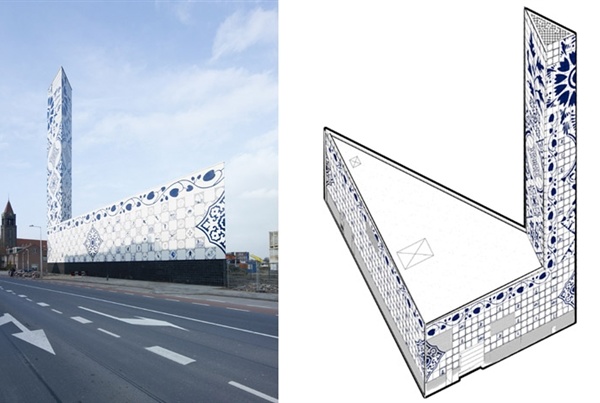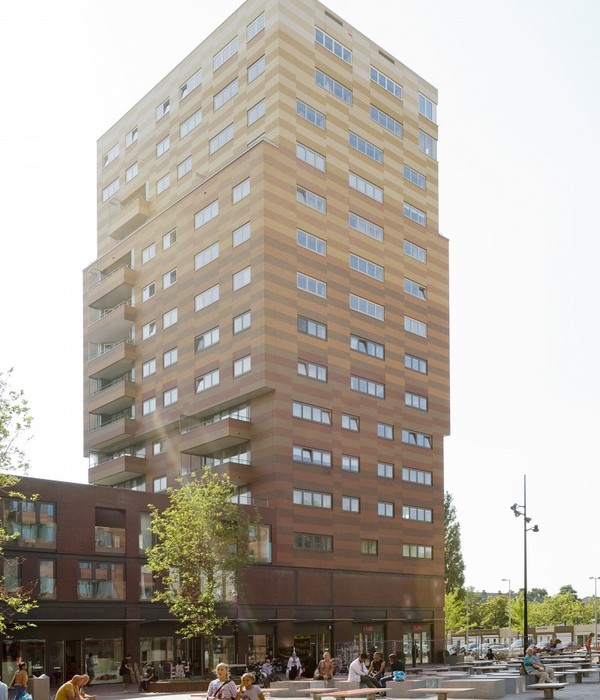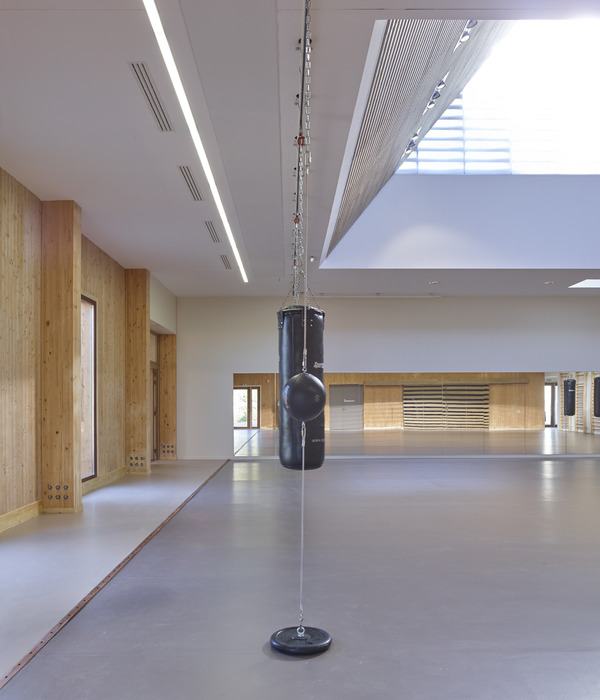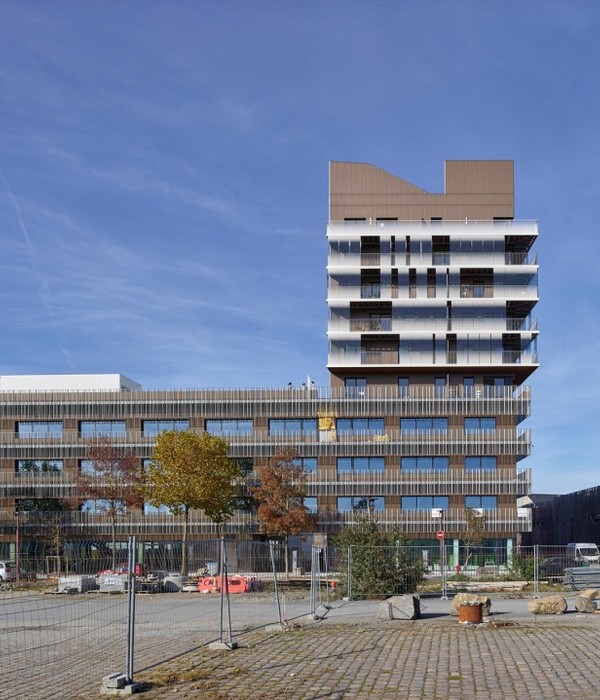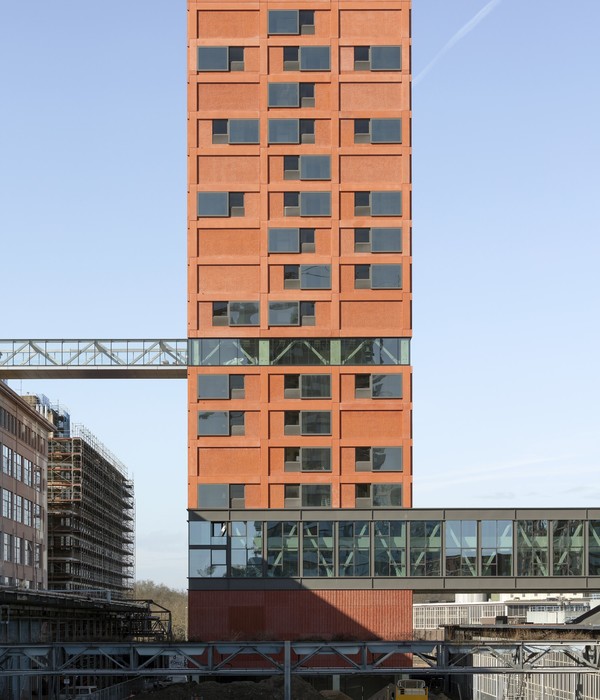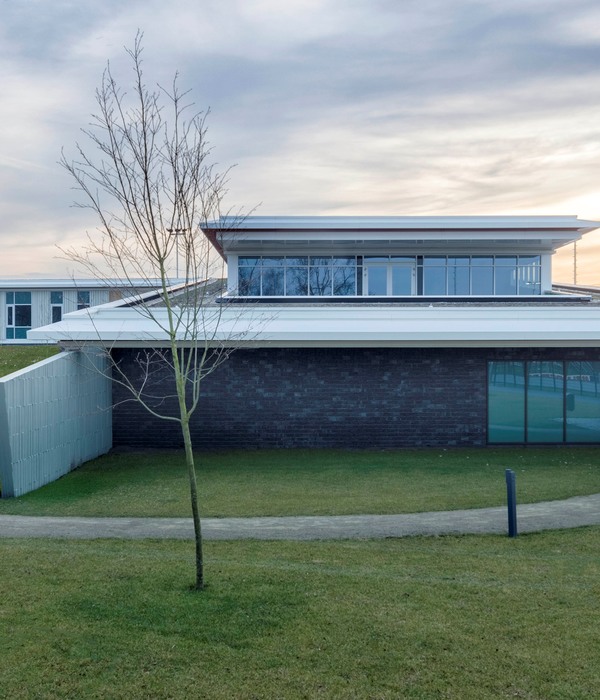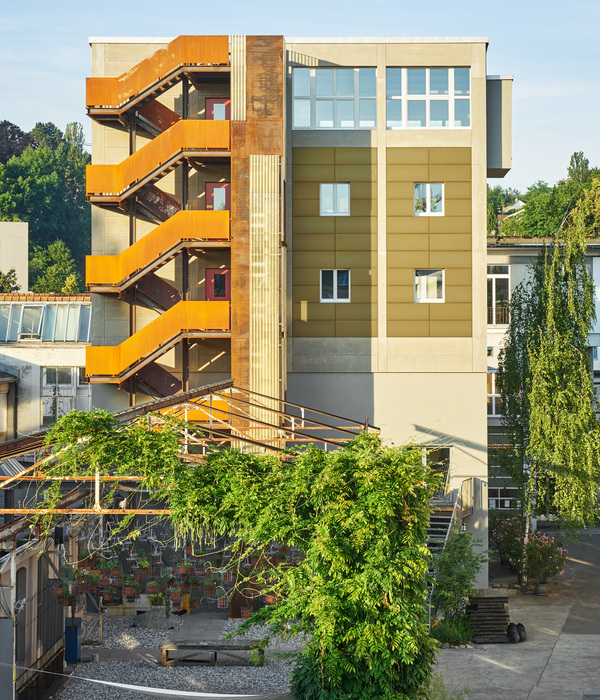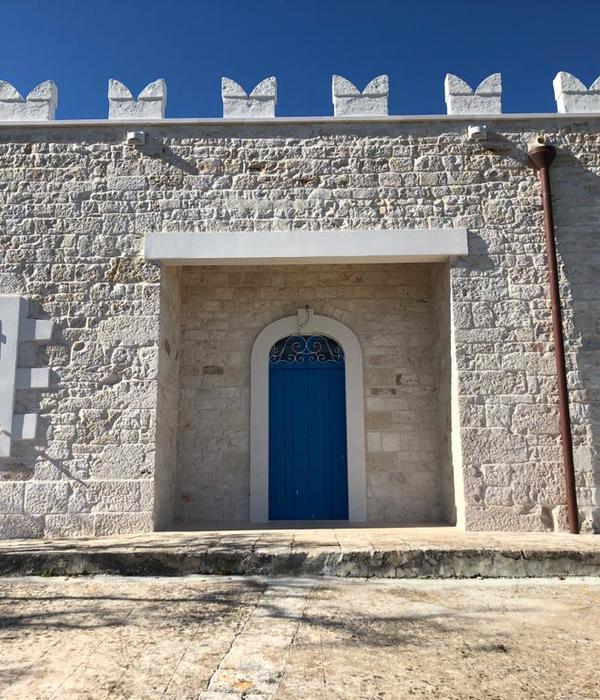© Oliver Rieger Photography
奥利弗·里格摄影
架构师提供的文本描述。在基恩街和布切森斯特拉市之间的布雷特谢德大街以南的内城地块上,代表巴登-符腾堡州建造了建筑学院Hochschule für Technik的扩建工程。他应该是大学的名片,作为一个独特的市中心标志。
Text description provided by the architects. On the inner-city plot south of Breitscheidstrasse between Kiene- and Buechsenstrasse was built the expansion for the Architecture faculty Hochschule für Technik on behalf of the State of Baden-Wuerttemberg. He should be a business card for the university as a distinctive inner-city mark.
© Niels Schubert Fotograf
(Niels Schubert Fotograf)
现有的结构通过改变其尺寸和距离、向南的短杆接连而被采用和扩展。第一阶段由3×2玻璃连接组合螺栓组成。该建筑工地可在第二阶段施工后再用两根钢筋完成。它也是关于建筑物的所有部分,定义和维护准确的轮廓基地。通过沿Breitscheidstrasse的自然下坡,基地正在形成完整的长度,并形成了坚实的基础。屋檐是从基涅斯特大街现有的建筑物中接管的。这导致了一个可能多达四层楼的建筑,这自然适应自己的道路空间。
The existing structure was taken up and extended out by varying their dimensions and distances succession of short bars to the south. The first phase consists of three by two glass joints combined bolt. The construction site could be completed with a second phase of construction by another two bars. It is also about a all parts of building defined and maintained accurately contouring base. Through the natural downward slope along the Breitscheidstrasse the base is emerging in full length and forms a solid basis. The eaves were taken over from the existing buildings in the Kienestrasse. This resulted in a possible up to four storeys building, that naturally adapt itself in the road space.
© Oliver Rieger Photography
奥利弗·里格摄影
© Oliver Rieger Photography
奥利弗·里格摄影
新建筑被分成三个双杠,有两个连接的玻璃或开口夹子。在外表清晰的被理解为两体条纹都是所有的房间。连接,在一楼的组件由一个宽的门厅区域,功能像一条内部道路。楼下有更多的讲堂、研究室、大厨房和灯光实验室。地下室里有车间和储藏室。他们可以直接进入维修站。在较高的楼层,位于西部的两个酒吧,更多的研讨会、讲座和电脑化办公场所,以及院长的东方和学院办公室。
The new building is divided into three parallel bars with two connected glass or opening up clips. In the outwardly clear to be understood as both body stripes are all the rooms. Connected, the components on the ground floor by a wide foyer area that functions like an internal road. Downstairs there are more lecture halls, seminar rooms, the eventkitchen and the light laboratory. In the basement are the workshops and storage rooms. These have direct access to the maintenance depot. On the upper floors are located in the two western bars more seminars, lectures and computerized premises and in the eastern and the institute office of the dean.
所有材料(最好是混凝土、玻璃、铝)都被使用并显示在其天然特性中。这是架构概念的一部分。风格元素,减少到较少的装饰元素和明智地使用材料导致了一个和平的气氛,这是一个适当的框架,灵活使用的建筑物。外露混凝土核心保温外墙深处的玻璃幕墙是外墙的特征要素。铝鳍的断电元件保护内部空间不过热。同样的房间深度在支撑的建筑物增加灵活性。
All materials (preferably concrete, glass, aluminum) are used and shown in their natural property. This is part of the architectural concept. The stylistic elements, the reduction to less ornamental elements and the judicious use of the materials lead to a peaceful atmosphere, which constitutes the appropriate framework for a flexible use of the building. The glas facade lying deep in the core insulated outer wall of exposed concrete are character elements of the facade. Blackout elements from aluminum fins protect the interior spaces from overheating. Same room depths in the brace of the building increase flexibility.
© Berger Röcker Architekten
c.Berger R cker Architekten
这座新建筑是作为钢筋混凝土骨架建筑建造的。内部和外部完成现场混凝土.支撑构件为混凝土柱,加固构件为实心钢筋混凝土天花板。建筑物内部与支撑结构部分分离。
The new building was built as a reinforced concrete skeleton construction. Complete inside and outside in-situ concrete. Supporting elements are concrete columns, stiffening elements of solid reinforced concrete ceilings. The interior of the building is partially separated from the supporting structure.
© Berger Röcker Architekten
c.Berger R cker Architekten
在所有地区和建筑层以及室外都提供无障碍环境。入口离河岸的人行道很近。
Accessibility is given in all areas and building levels and in the outdoor. The entrance is at ground level from the sidewalk of reach.
Architects Berger Röcker
Location Stuttgart, Germany
Category University
Area 8600.0 m2
Project Year 2016
Photographs Oliver Rieger Photography, Niels Schubert Fotograf, Berger Röcker Architekten
Manufacturers Loading...
{{item.text_origin}}



